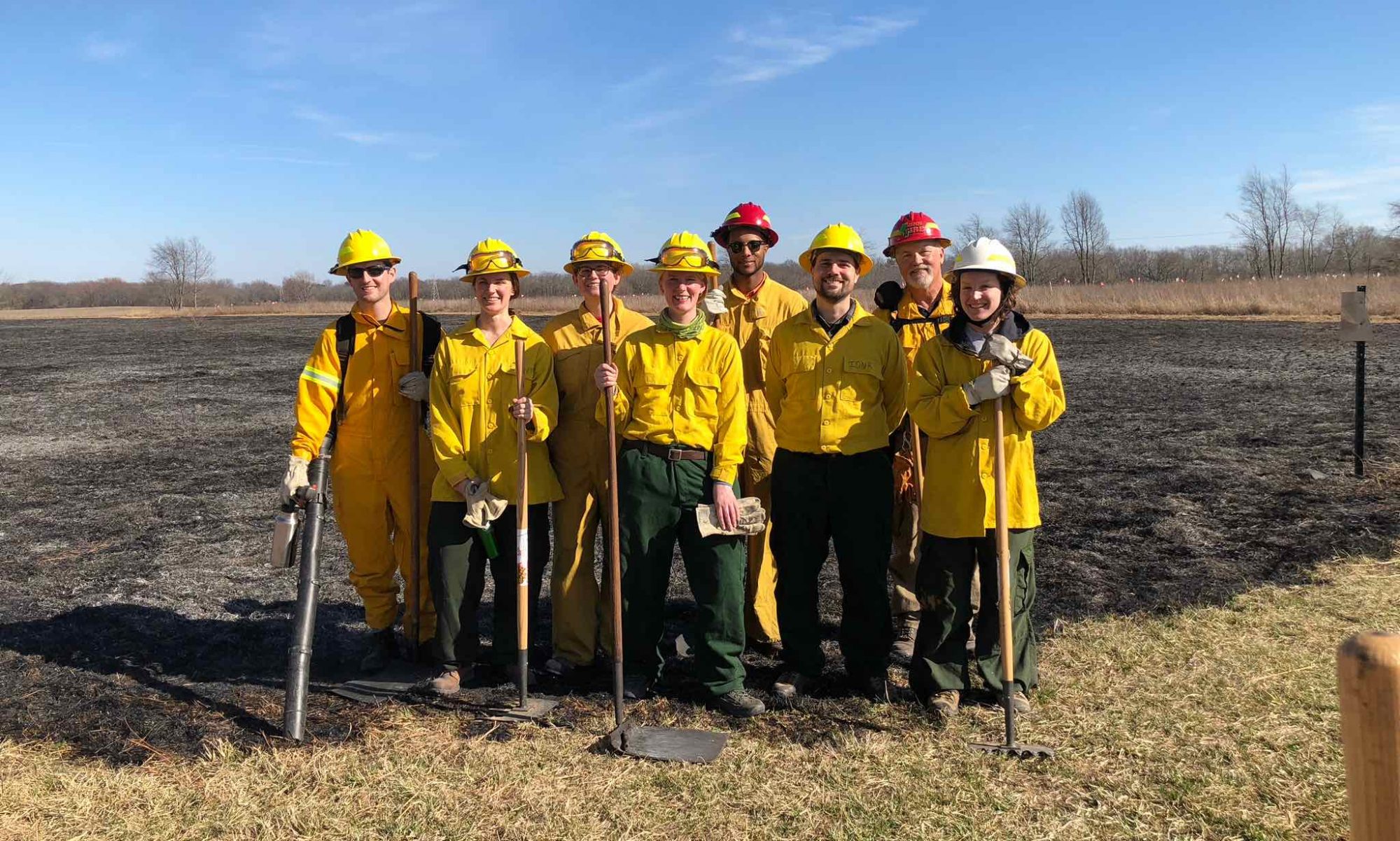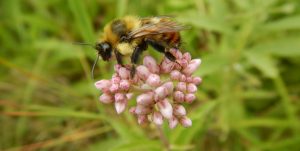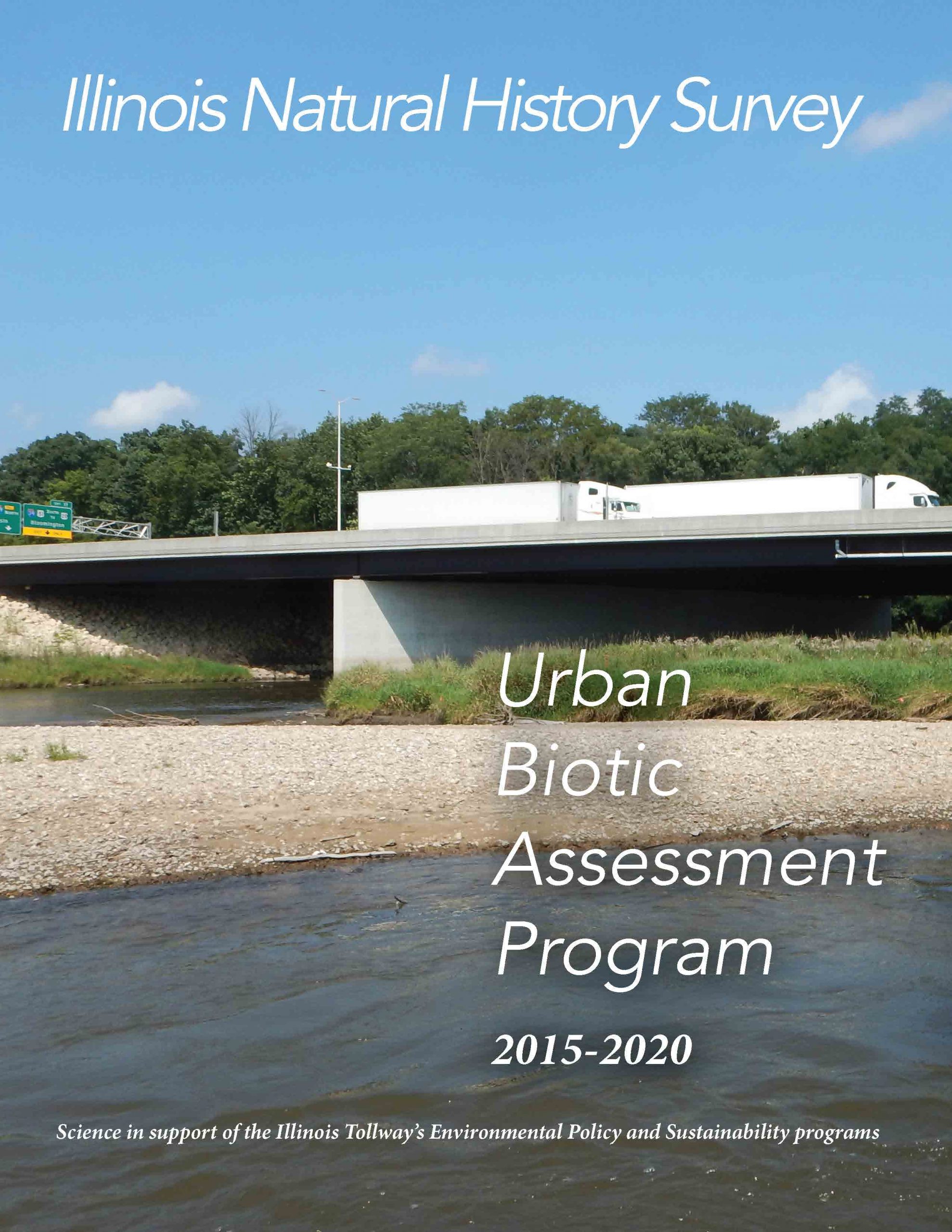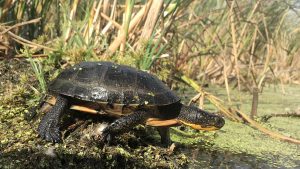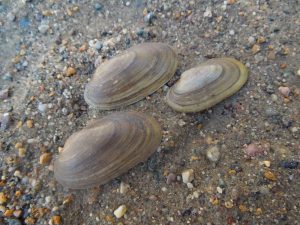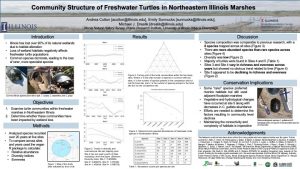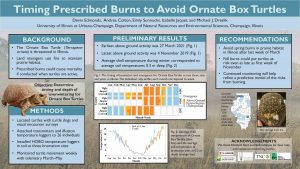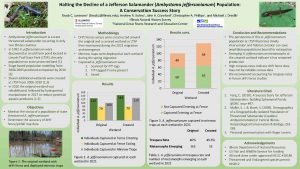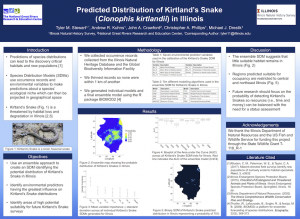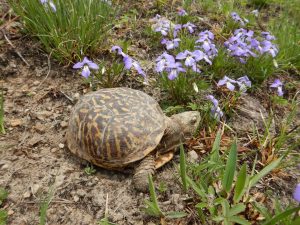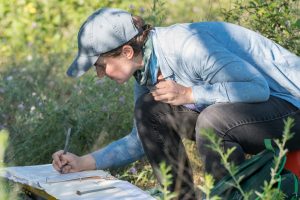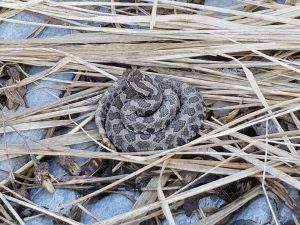 Genetic analysis shows that the Eastern Massasauga hibernacula at Carlyle Lake are genetically distinct units.
Genetic analysis shows that the Eastern Massasauga hibernacula at Carlyle Lake are genetically distinct units.
Once found across the northern two-thirds of Illinois, populations of the Eastern Massasauga have declined, with only one known population remaining in Illinois. Our long term studies have found the top four sources of mortality to include automobiles, predation, management related mortality (prescribed burns, mowing, etc), and disease. Our current study indicates that efforts to address these ecological threats may not be enough to save this imperiled species.
The area under what is now known as Carlyle Lake was a floodplain valley known as Boulder Bottoms. The creation of Carlyle Lake in the 1960s flooded this area, separating habitats on the the east and west sides of the Kaskaskia River, pushing wildlife, including the Eastern Massasauga, to the edges between the lake and agricultural fields. These bands of habitat are separated by the lake, paved roads, agriculture, and urbanization, potentially limiting migration and gene flow between patches.
Our current study looked at 327 genetic samples collected between 1999 and 2015 from individuals at 9 hibernacula across 3 study areas at Carlyle Lake. Study sites separated by up to 5 km had limited gene flow, as did hibernacula separated by a few hundred meters. This restriction of gene flow increases the vulnerability of these already imperiled populations.
Our study indicates that conservation and recovery efforts need to consider genetic rescue efforts in addition to reduction of ecological threats. Such efforts may include translocations and captive rearing to reduce the impacts of inbreeding depression and genetic drift. Even short distance translocations between the different study areas at Carlyle Lake could help restore gene flow impeded by contemporary human created fragmentation.
Read the paper at PLOS One
Anthonysamy, Whitney J.B., Michael J. Dreslik, Sarah J. Baker, Mark A. Davis, Marlis R. Douglas, Michael E. Douglas, and Christopher A. Phillips. 2022. Limited gene flow and pronounced population genetic structure of Eastern Massasauga (Sistrurus catenatus) in a Midwestern prairie remnant. PLOS ONE: https://doi.org/10.1371/journal.pone.0265666
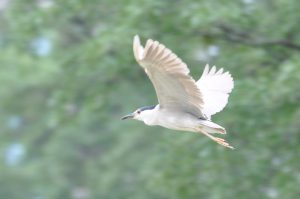 The landscape surrounding wetlands does not determine use by most wetland birds according to a new study by UBAP Ornithologist Anastasia Rahlin and collaborators Sarah P. Saunders (National Audubon) and Stephanie Beilke (Audubon Great Lakes).
The landscape surrounding wetlands does not determine use by most wetland birds according to a new study by UBAP Ornithologist Anastasia Rahlin and collaborators Sarah P. Saunders (National Audubon) and Stephanie Beilke (Audubon Great Lakes).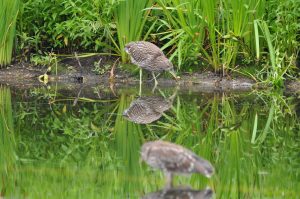 Rahlin says, “to me, it’s a hopeful message that yes, restoration does work and is important even in small urban wetlands.”
Rahlin says, “to me, it’s a hopeful message that yes, restoration does work and is important even in small urban wetlands.”